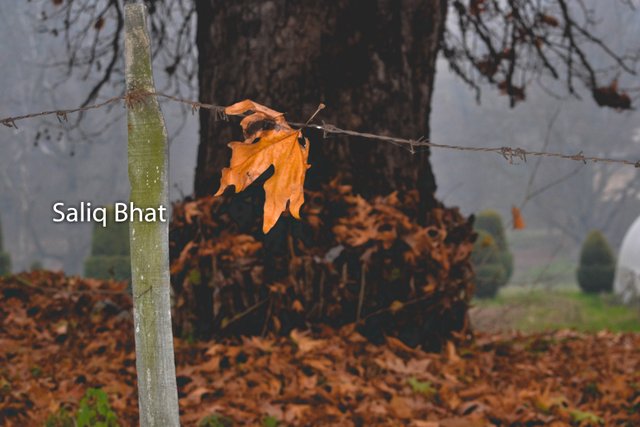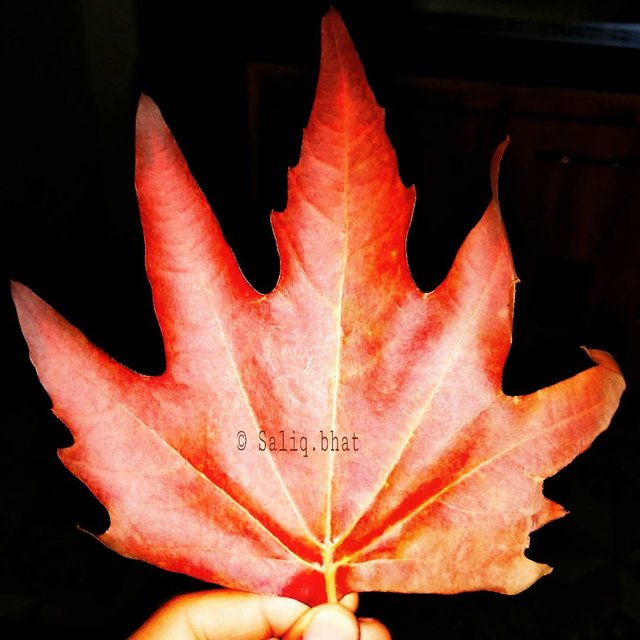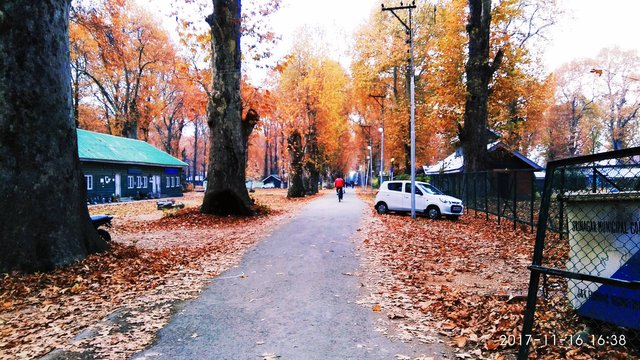The speaking tree of Kashmir
The Chinar, brilliant in red, mauve, golden and yellow, dabs the pre-winter scene of Kashmir, conveying cheer to individuals whose lives have been damaged by long periods of militancy


Kashmir's scene is quick changing with the beginning of harvest time. It has made the sun mellow, carried a cold fog into the air and exposed most trees, including the forceful Chinar (Maple). Strolling down the roads, one can't miss the stirring sound of leaves from the really popular Chinar trees ending the quietness.
The great Chinar trees (whose herbal name is Platanus orientalis or oriental plane) develop as tall as 25 meters, with bigness surpassing 50 feet now and again. These trees figure prominently in Kashmir's writing and legislative issues; religion and sentiment.
It's not the Chinar amid the mid year, when it is all green, that draws the group, however the Chinar amid fall. For that is the point at which its leaves procure changed bright tones — of dark red, mauve, golden and yellow — in a brief timeframe, some place around October end, and remain that route till the finish of November. Stroll around Srinagar amid this season and you can discover Chinar leaves, in various brilliant hues, wound and twisted by the impulses of the mid year.
The shedding of Chinar leaves, privately known as Buen, marks the beginning of fall and sets off a procedure of progress in the Valley consistently, with individuals wearing woolens and changing their sustenance propensities to suit the climate.
Islamic evangelists who set out to Kashmir four centuries prior from Central Asia and Persia additionally loved the tree. It is said that the most seasoned Chinar tree in Kashmir, around 700 years of age, was planted by the Sufi Saint Syed Qasim Shah in Chattergam, in focal Kashmir's Budgam locale. The tree developed to be 14.78 meters high.
Ladies crying and asking in the sanctuaries, wanting to convey a conclusion to their distresses, can be seen situated under the Chinar trees that spot the vast majority of the Valley's noticeable hallowed places and mosques. Two noteworthy hallowed places in Kashmir — Sultan-ul-Arifeen and Hazratbal — have conveniently put great Chinar trees for the lovers.
Hindu admirers similarly worship the Chinar tree. The trees can be found in the goddess Bhavani sanctuaries in Kashmir, including the Khir Bhawani sanctuary in Ganderbal. Numerous Hindus trust that the Kashmiri name 'Buen' originates from goddess Bhavani.
Authoritatively, there were 42,000 Chinar trees in Kashmir amid the 1970s. Be that as it may, the number had tumbled to around 5,000 by the turn of the century. Be that as it may, the agriculture division is compensating for the lost numbers again by planting around 14,000 more trees.
Ridden with political vulnerabilities, seething militancy and inescapable security work force over the Valley, Kashmiri inhabitants look for comfort under the Chinar, before winter arrives and its hues blur. 
Chinar-gazers collect under the tree in towns, towns and the capital city of Srinagar to look in wonder at the changing tones and twirling leaves, which are scorched to keep the conventional Kangri (earthen fire-pot) alive when snowfall assumes control over the scene.
The Chinar has filled in as a motivation for lawmakers as well. Previous Chief Minister Sheik Muhammad Abdullah, who kicked the bucket in September 1982, titled his life account 'Aatish-I-Chinar', which signifies 'Fire of Chinar'. Abdullah's dear companion and previous Indian Prime Minister Indira Gandhi, as indicated by Congress pioneer Muzaffar Parray, was a consistent to Kashmir in harvest time. "Gandhi went to Kashmir that month she was killed in 1984. She was captivated by the fall Chinar trees," said Mr. Parray.
Known as Chanakya and a nearby associate of the Nehru-Gandhi administration, Makhan Lal Fotedar, a Kashmiri, named his uncovered all diary The Chinar Leaves.
The centrality of the Chinar in individuals' lives can be measured from the way that the main Kashmiri Muslim mold originator Zubair Kirmani, who became showbiz royalty in the form business in India, named his image Boune Paen (leaves of Chinar). "The tree speaks to our legacy and culture. It is characteristic for kashmiris' identity," says Mr. Kirmani.
To catch the political disturbance and uprising long stretches of Kashmir, Bollywood executives Vishal Bhardwaj in Haider, Shoojit Sircar in Yahaan and Aamir Bashir in Harud picked the harvest time and Chinars to delineate the vexed circumstances the Valley has experienced.
With its birthplaces accepted to be in Greece, the Chinar tree is a quiet observer to Kashmir's sentiment, its religious love, and its political and outfitted battles for a long time now.
In 1990s, when militancy seethed over the State, the activists utilized the Chinar as shelters and arms dens. Given the bigness of the storage compartment, the empty spaces in the middle of could suit the two men and furnished hardware.
As militancy faded over some stretch of time, rights dissident Khurram Pervez, organizer of Jammu and Kashmir Coalition of Civil Society, says that the Chinar presently gives shade to countless graves and mass graves in the State.
A burial ground in Bimyar in Baramulla area, 50 km far from Srinagar, is specked by Chinars. "The Bimyar cemetery has numerous fantasies and a great deal of agony covered. This is a site of mass graves and plain graves. In excess of 230 unidentified individuals are covered here, which incorporates a 6-month-old child young lady," says Mr. Pervez.
With a strict prohibition on their being cut, the Chinar dabs memorial parks and Mughal plants as well as schools and colleges as well. Interstates and homes have powerful Chinars, which thus have the transitory feathered creatures that come the distance from Siberia and Russia.
The Mughal greenery enclosures of Naseem Bagh in Srinagar house in excess of 100 Chinar trees, an ideal host to sweethearts who come here for a sentimental escape.
Numerous couples can be spotted here shooting recordings to safeguard the beautiful excellence of the site for children. Long range informal communication destinations, for example, Facebook and Twitter are overwhelmed with selfies from the youthful and the old alike with the grand Chinar trees in the background.
"These hues play on the psyches of individuals and propel them to embrace pleasurable exercises," says Dr. Arshad Hussain, a main specialist working at Shri Maharaja Hari Singh healing center.
The Chinar leaves hence help battle the regular discouragement actuated by the pre-winter sun, especially among Kashmiris, whose lives have been defaced by the viciousness and revolt of the previous 25 years.
Truth be told, Kashmir's dissenter battle keeps on drawing its inspiration from writer Sir Muhammad Iqbal's renowned couplet, which was impacted by the Chinar:
'Jis khaak ke zameer me hai aatish-e-chinar,
Mumkin nahi ki sard ho woh khaak-e-arjumand
(The residue that conveys in its inner voice the fire of the Chinar, It is unthinkable for that divine residue to chill off).